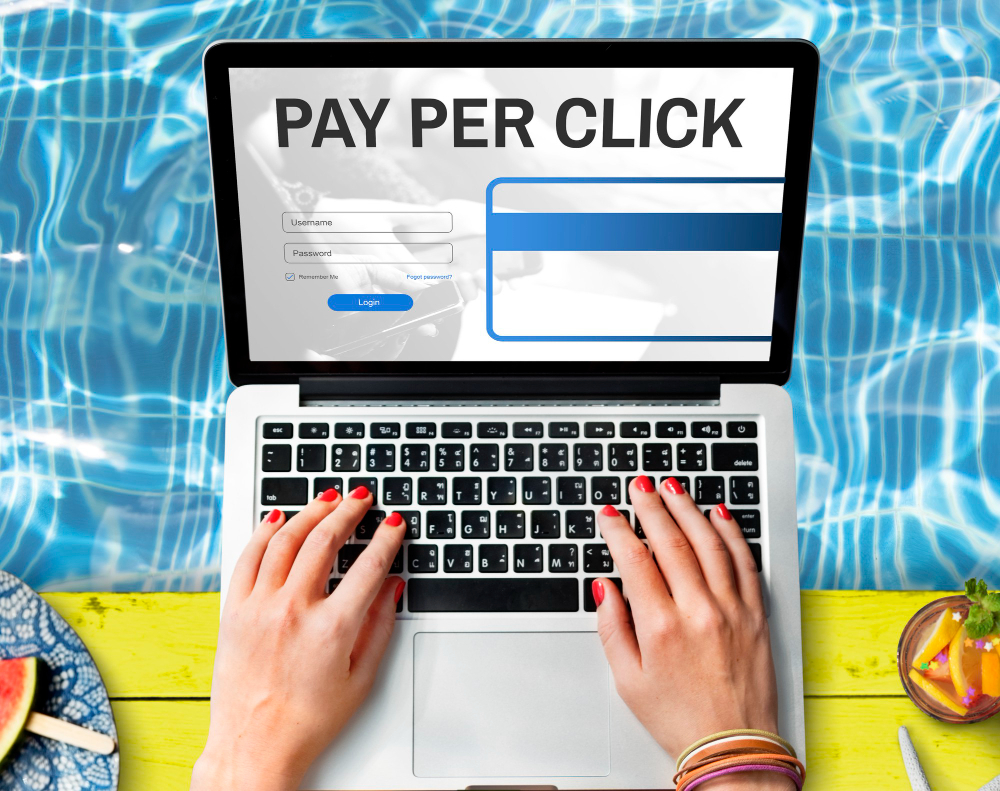Unlock the Potential of (PPC) Pay-Per-Click Advertising: A Comprehensive Guide for All Levels
Whether you’re a seasoned PPC expert or just dipping your toes into the world of online advertising, chances are you’ve encountered some of the common challenges that come with PPC advertising. Despite these hurdles, hundreds of thousands of businesses leverage online advertising to expand their reach and boost their revenues. The importance of PPC advertising is undeniable, with 80% of marketers allocating at least a portion of their advertising budget to search.
Yet, even with more than two decades of PPC advertising under its belt, some businesses still struggle to make it work effectively. Why is that? Let’s learn that in this comprehensive guide to navigating the intricacies of PPC advertising. Know why some marketers continue to see minimal returns on their ad spend.
If you find yourself asking questions like, “Should my business give PPC marketing a shot? What type of PPC advertising should I invest in? How do I even get started with PPC advertising?” then this blog is tailor-made for you.
Let’s Start with the Basics: What Is PPC?
In the world of online advertising, PPC stands for “pay-per-click.” As the name suggests, businesses are charged a fee every time a user clicks on one of their ads in the PPC model. Your bid, which is a critical factor, determines where your ad will appear in a blind auction where ads compete for the same traffic. When a user searches for something relevant to the keywords you target, the winning ads are displayed at the top or bottom of the search engine results page (SERP), clearly marked with an ‘Ad’ label.
Businesses turn to PPC advertising to increase traffic to their landing pages, establish their brands, and drive more sales to customers actively seeking their products and services. Leading platforms offer unparalleled depth and reach, allowing advertisers well-versed in the platform to craft hyper-targeted ads perfect for their desired audience. PPC advertising allows businesses to reach customers precisely where and how they are searching, offering a level of personalization and targeting unmatched by traditional advertising.
How Pay-Per-Click Advertising Works?

Understanding the mechanics of PPC advertising is essential to boosting the effectiveness and return on investment of your campaigns. Many businesses rush into creating their ads and then wonder why they aren’t reaping the expected profits. Knowing how PPC operates gives you a better shot at running a successful campaign and making a profit.
In the world of PPC, there are three primary players:
- Advertisers: These are business owners or individuals who utilize pay-per-click services to promote their products and services. To have their ads displayed on PPC networks (such as Google, Bing, and Facebook), they pay a fee. This fee is incurred each time a visitor clicks on their ad, hence the name “pay per click.” The cost per click varies depending on the targeted keyword and the level of competition, ranging from a few pennies to several pounds.
- Publishers: Publishers partner with PPC networks to display ads and generate income. Most publishers have websites where they display these ads, earning a portion of the revenue for each click. The amount they receive depends on the clicked keyword and its average bid. Many PPC networks engage publishers to broaden their reach, showing ads on various websites, apps, and videos. Advertisers can choose to have their ads displayed on the network or with partner publishers. This not only reduces advertising costs per click but also benefits publishers by sharing in the revenue while boosting the network’s profits. It’s a win-win for all parties involved!
With these key players in mind, let’s delve into how the bidding process works.
Bidding: Each keyword has four available ad slots positioned above the top organic search result. Your ad’s position is determined by the average bid for the keyword. It’s crucial to note that competing for the top spot isn’t always necessary; you can run a successful campaign even in position 4. Chances are you’ll pay less than the top spot while still receiving relevant clicks. Google’s Keywords Planner tool can provide insights into your position and advertising costs.
Now that you’re familiar with how bidding affects your ad position and overall performance, let’s explore the concept of quality score.
Quality Score: Google uses a Quality Score system to evaluate the effectiveness and relevance of displayed ads. It influences both your ad’s position and cost per click. Maintaining a high-quality score can enable you to choose between a lower CPC and a higher one.
So, now that we’ve covered the mechanics of PPC advertising, let’s distinguish it from traditional newspaper advertising.
How Pay-Per-Click Advertising Differs from Traditional Newspaper Advertising

One notable difference is customer engagement, which is significantly higher in PPC advertising compared to traditional newspaper ads. With PPC marketing, customers can instantly view product details and offers with a click, eliminating the need to visit a physical store or corporation for information.
PPC Platforms
Not all digital advertising platforms are created equal. To maximize the efficiency of your marketing budget, it’s essential to understand how to utilize various PPC ad platforms to achieve your marketing objectives. You must select the most suitable PPC platforms for your specific goals, whether it’s lead generation, sales, or brand awareness.
Here are some of the top PPC platforms:
- Google Ads: With over 3.8 million searches conducted on Google every minute worldwide, it’s a prime platform for reaching potential customers actively seeking specific products or services. Google Ads provides robust targeting tools and offers search, display, and video ads directly to potential customers. It’s an excellent choice for businesses with limited Pay-Per-Click advertising budgets and multiple marketing goals. Larger businesses can also use Google Ads to bid on broader search keywords to outperform competitors and establish brand dominance.
- Microsoft Advertising: This platform is another popular choice for paid search. Many advertisers who already use Google Ads find it easy to import their campaigns into Microsoft Advertising. The interface closely resembles Google Ads, facilitating seamless campaign imports. Microsoft Advertising displays paid search ads on several search engines, including Bing, AOL, Yahoo!, and MSN. It operates based on keywords, showing ads when a user’s query matches the targeted keyword. Additionally, it features display options and runs image ads on the Microsoft Audience Network.
- Amazon Advertising: Businesses using Seller/Vendor Central can use PPC campaigns to promote their brands and products on Amazon’s website. Given the intense competition on Amazon, PPC is considered essential for success and scaling. Dominating your product category on Amazon’s organic search results can result in valuable customers ready to make a purchase.
Types of PPC Models
Now that we’ve covered how PPC works and the fact that advertisers pay for each click, let’s delve into the various models that determine the fee structure. There are two primary models: the Bid-Based Model and the Flat Rate Model.
Bid-Based Model: In this model, advertisers set their maximum bid during an auction. Bidding continues until the publisher accepts a bid using automated tools. The bidding price typically depends on the quality of the ad content and the advertiser’s position. Advertisers with higher rankings and high-quality content are preferred in the bidding process.
Flat-Rate Model: As the name implies, this model charges a fixed rate per click. Advertisers pay a predetermined amount for each click, often varying depending on the website section. The ad platform providers themselves determine these rates. This model is popular among businesses and digital marketers for its cost-effectiveness. Publishers (the ad platform providers) are often open to negotiation, especially for long-term contracts.
Types of PPC Campaigns
We’ve talked a lot about ads
in this blog so far. Let’s now explore the different types of PPC campaigns:
- Search Network: Search ads appear when a user types a keyword into the search bar. This is the most common type of PPC marketing. It’s known for helping organizations achieve their maximum potential and visibility. These ads are highly targeted, as they only appear when users search for specific keywords. A search ad typically consists of a headline, display URL, and description text, all designed to persuade users to click through. Ad extensions can be used to provide additional information to users.
- Display Network: Display ads operate differently from paid search ads, even though they originate in the Google Ads interface. The primary distinction is that search ads are “pull” ads, while display ads are “push” ads. Search ads are visible only to people actively seeking your product or service, while display ads are paid placements based on various targeting criteria.
- Search Network with Display Opt-In: This campaign combines both Display and Search Networks. When creating a search network campaign, you have the option to “opt-in,” ensuring that display ads only appear in relevant search results. This campaign type allows you to reach a broader audience. We recommend creating separate campaigns for display and search engines instead of using a single campaign for both options.
- Shopping: Product Listing Ads (PLAs): These ads feature the product’s image, name, price, and description. They can appear on various partner sites within the Display Network, including YouTube, as well as on search results pages.
Tips for Leveraging Pay-Per-Click Advertising for Business
To enhance the effectiveness of your PPC campaigns, consider these valuable tips:
- Choose the Right Type of PPC: Optimize your PPC campaign by defining clear, measurable goals. Your objectives serve as the foundation of your optimization process, providing you with a roadmap for success. Start by determining what you aim to achieve with your paid search ads, setting specific and attainable goals that motivate your team to contribute to your business objectives.
- Establish a Budget: Avoid diving into Google Ads with blind bids, as this can deplete your budget without delivering meaningful results. Conduct thorough competitor analysis and regularly update your PPC campaigns to understand where best to allocate your budget for maximum ROI.
- Target the Right Location: Select the geographical area you want to reach with your ads. Precisely define your location targeting to ensure your ads appear where they are most relevant.
- Understand Your Ad’s Purpose: Pay-Per-Click advertising can help you achieve various goals, from increasing brand visibility to driving more website traffic and improving conversion rates. Make sure you have a clear understanding of the primary purpose of your ad before launching your campaign.
- Track Conversions with Analytics: Regularly monitor your campaign’s performance to ensure its success. One common pitfall is not giving campaigns enough time for tracking, which can lead to suboptimal results. Utilize tools like Google Analytics to keep track of your progress. For enhanced effectiveness, consider investing in automation software that provides closed-loop reporting, allowing you to quickly access crucial data for refining your marketing strategies and improving your PPC campaign’s performance.
- Choose Relevant Keywords: The success of your campaign often hinges on selecting the right keywords that drive views, click-throughs, traffic, and conversions. Conduct thorough keyword research and include both broad and long-tail keywords to maximize your reach. High-quality keywords can also result in a higher quality score and lower cost per click.
- Utilize Negative Keywords: Negative keywords can significantly reduce your campaign budget by preventing your ads from appearing for irrelevant searches. When used effectively, negative keywords can help protect your budget and drive more targeted traffic.
Benefits of PPC Advertising

Now that we’ve covered the essentials of Pay-Per-Click advertising, let’s explore some of its key benefits:
- Increased Sales: Online shoppers often begin their purchase journey with product research. PPC advertising helps you target a highly specific audience actively searching for your products or services, increasing the likelihood of closing sales. Satisfied customers are more likely to become repeat buyers, leading to higher conversions and a better return on investment.
- Lead Generation: PPC can significantly boost the number of leads your business generates. By putting your brand in front of your target audience, you can build a solid reputation and foster customer trust. However, a well-thought-out plan is essential before launching a PPC campaign.
- Brand Awareness: When conducting online searches, users often focus on the top of the search results page. It takes at least six exposures to a brand for a consumer to recognize it. Even if users don’t immediately engage with your company, PPC advertising helps build brand recognition.
Drawbacks of PPC Marketing
While PPC advertising offers numerous advantages, it’s essential to be aware of potential drawbacks:
- Cost: Due to the popularity of pay-per-click, bidding wars can drive up costs significantly. Some competitive keywords, such as “life insurance,” can command CPCs exceeding £10.
- Dependency on Search Volume: Pay-Per-Click advertising heavily relies on search volume. Ranking for highly competitive keywords may take longer, impacting your campaign’s success.
- Wasted Ad Spend: Ineffective PPC campaigns can lead to wasted ad spend and lost revenue. It’s crucial to continuously monitor and optimize your campaigns to avoid common PPC errors that can cost businesses thousands each month.
In Conclusion
Pay-Per-Click advertising represents a pivotal component of paid advertising and has empowered countless businesses to achieve their marketing objectives. We hope this comprehensive guide to PPC will equip you with the knowledge and tools needed to embark on a successful digital marketing journey. At Internet Entry, we’re dedicated to selecting the most strategic keywords for your ads, evaluating your competition, and tailoring a budget-friendly package to support your company’s PPC growth.
Feel free to contact us to learn more and take the next step in harnessing the power of PPC advertising for your business.

